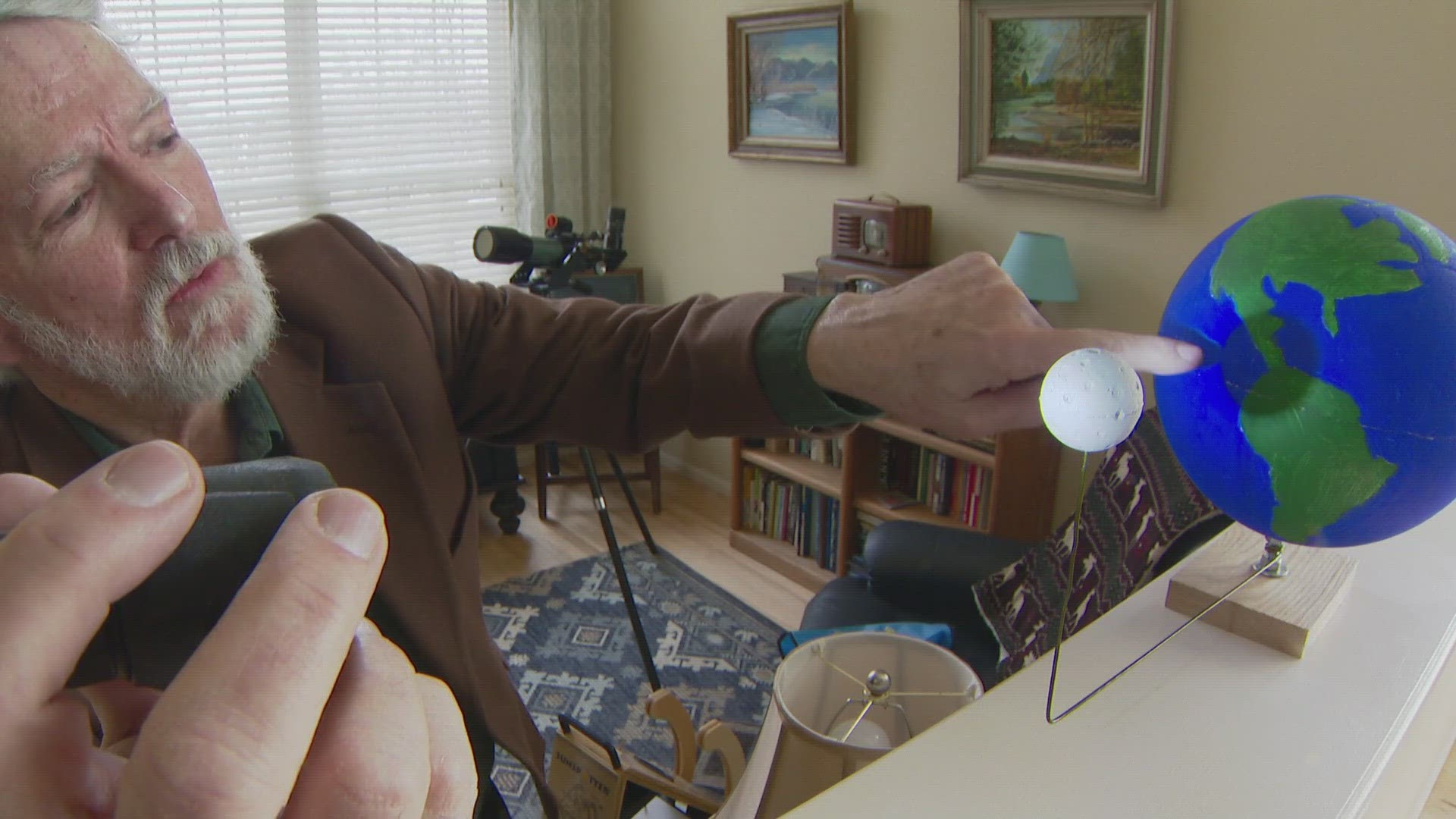DENVER — We are now one week away from the total solar eclipse.
While Colorado isn't in the path of totality, people here can still catch a glimpse of the partial eclipse as it crosses the skies Monday afternoon.
"When you're right underneath that main shadow, that is where totality occurs," Ron Hranac with the Denver Astronomical Society said. "In the Denver area, we're going to get about 65% obscuration at maximum."
Colorado will see a partial solar eclipse, roughly between 11:30 a.m. and 1:30 p.m., with a max partial eclipse around 12:40 p.m.
While Denver isn't front and center for totality, Hranac said people here can still catch an astronomical view.
"If people can get to the path of totality, do it. If you can't, well, you can still enjoy at least a partial solar eclipse," Hranac said.
If you're planning on stepping outside Monday afternoon to get a gander, you've gotta do it right.
"Before they go out, they should plan on taking things like a wide-brimmed hat, lather up with sunscreen and don't forget the lip balm because lips can get sunburned as well," Hranac said.
Ready to stare at the sun? Make sure you pop on ISO-certified eclipse glasses.
"So you fold them up like regular sunglasses. And by the way, don't use regular sunglasses," Hranac said. "That is not good enough. So put these on when you're not looking at the sun. Then look up at the sun."
Or use a telescope. But make sure your scope is filtered before you take a peek.
“Never, never look through an unfiltered telescope or unfiltered binoculars either with the naked eye or even with eclipse glasses," Hranac said. "You may remember playing around in school with a magnifying glass and a piece of paper. If you can imagine with an unfiltered telescope, the sun's image is being magnified and all that energy will be concentrated at the eyepiece and it will melt the eclipse glasses and cause eye damage."
No glasses? Hranac said there are other ways to see the effects of the eclipse. Even a spatula with holes can help.
"A spatula, it’s got a bunch of holes in it," Hranac said. "So you just hold this facing the sun and look at the ground, and you'll see during the partial phases of the solar eclipse what looks like crescent moons, and those are actually images of the crescent sun."
If you're crafty, you can build your own pinhole projector to safely look at the sun during the eclipse.
If you miss your chance to look up this time around, the next opportunity for an out-of-this-world view will take some time to pass by Colorado.
"Unfortunately, the next total solar eclipse will not be visible in the United States for about 20 years," Hranac said. "It will be visible in Colorado."
Members of the Denver Astronomical Society will be out with their telescopes, binoculars and eclipse glasses Monday. The eclipse viewing party runs from 11 a.m. to 2 p.m. at Chamberlin Observatory on the University of Denver campus. It's free and open to the public.
SUGGESTED VIDEOS: Colorado Guide

